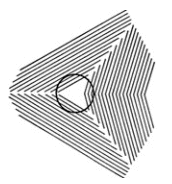|
Linear Measurements is a tool used in an attempt to "read" the
expression of efficiency and fertility in the genetics of an animal.
 Efficiency Efficiency
An important part of fertility is efficiency. The more efficient a cow is
the more likely she is to maintain or improve her body weight in any given
environment. Everything else being equal, a cow will have more difficulty
breeding if she cannot maintain her body weight. While attrition of thin
cows is one way to limit the generational impact of non-efficient animals
it would be less costly if we could project the efficiency of the potential
herd animal before they become part of the herd.
Although some of the DNA tests are being used to identify
efficiency. They do not account
for all efficiency in cattle. A
secondary measurement we use is to measure the size of the individual
organs that actually convert grass into bodily needs (the heart, liver,
etc). What we do is measure what we can, the volume (outside) of the animal
and use that as a rough translation for efficiency. This is no different than the
industry standard practice of sizing the scrotum and using it as a rough
translation of fertility.
The correlations are positive and
ongoing research is being done in the industry to utilize this data.
These measurements are always used in conjunction with other measurements
of the animal itself. The objective is how balanced the animal is or in
different words whether the animal is in proportion to itself.
Fertility
Other measurements are taken attempting to quantify expressions of
fertility such as degree of cresting and muscular development in the
shoulders of bulls (related to the level of testosterone). In heifers it is the characteristic
feminine wedge development of the hips being wider than the shoulders and
the flank being deeper than the girth.
 The JHL started using
linear measurements as an additional criterion in bull selection in 1991.
In 1997, it was implemented with all replacement heifers. The eyes do not
necessarily give correct information regarding an animal's proportions (See
Eye Trick Illustrations for more detail). This
is one reason why we actually tape measure the animals. We can see whether any progress is
made year over year and identify specific genetic lines to pursue. At a minimum we should have
pheno-typically more consistent animals. (See Applied Linear Measurements for
more detail.) The JHL started using
linear measurements as an additional criterion in bull selection in 1991.
In 1997, it was implemented with all replacement heifers. The eyes do not
necessarily give correct information regarding an animal's proportions (See
Eye Trick Illustrations for more detail). This
is one reason why we actually tape measure the animals. We can see whether any progress is
made year over year and identify specific genetic lines to pursue. At a minimum we should have
pheno-typically more consistent animals. (See Applied Linear Measurements for
more detail.)
|